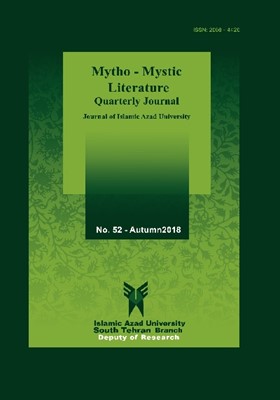-
-
List of Articles
-
Open Access Article
1 - Love in Sefat al-āšeqīn and Abhar al- āšeqīn: An Intertextuality Approach
Ebrāhim Ebrāhimtabār Jamshid Najaf -
Open Access Article
2 - Creativity and Problem Solving in Masnavī-ye Ma’navī
abolghasem AmirAhmadi -
Open Access Article
3 - Myth in Folk Tales of Children; A Case Study: Davīdam o Davīdam
Hafez Hatami Naqmeh Shokraneh -
Open Access Article
4 - Asceticism in the Worldview of Attar of Neyshaburi
Hadi Dini Mir Jalil Akrami -
Open Access Article
5 - Soluk from the Perspective of Ibn al-Farez
Amir Hossein Rasoulnia -
Open Access Article
6 - The Mythical Deep-Structures in the Works of Mohebali; A Case Study: The Grey Spell
Ali Taslimi Farzāneh Moonesān -
Open Access Article
7 - The Self-transcendent Character of Kei Khosro; Based on the Theory of Viktor Frankl
Fariba Rezaeikhosravi Musa Parnian NASRIN REZAIE KHOSRAVI -
Open Access Article
8 - The "Mother Archetype" in Qesse-hā-ye Mašdī Galīn Xānūm Based on Jungian Theories
Seyyed Hasan Rouhani Seraji Hossein Khosrav Amir Hossein Hemati -
Open Access Article
9 - “Zahhāk” and “Loki”: A Comparison between Two Iranian and Scandinavian Myths; Based on Two Plays of Zahhāk and the Little Eyolf in the Framework of Trifunctional Hypothesis by Georges Dumézil
Farindokht Zahedi Maral Asgharian Mahsa Talebi Rostami -
Open Access Article
10 - The Components of Surrealism in Masnavī-ye Ma’navī; A Comparative Study
Fātemeh Koolivand Gholamreza Salemian Fatemeh Kolahchian
-
The rights to this website are owned by the Raimag Press Management System.
Copyright © 2021-2025







